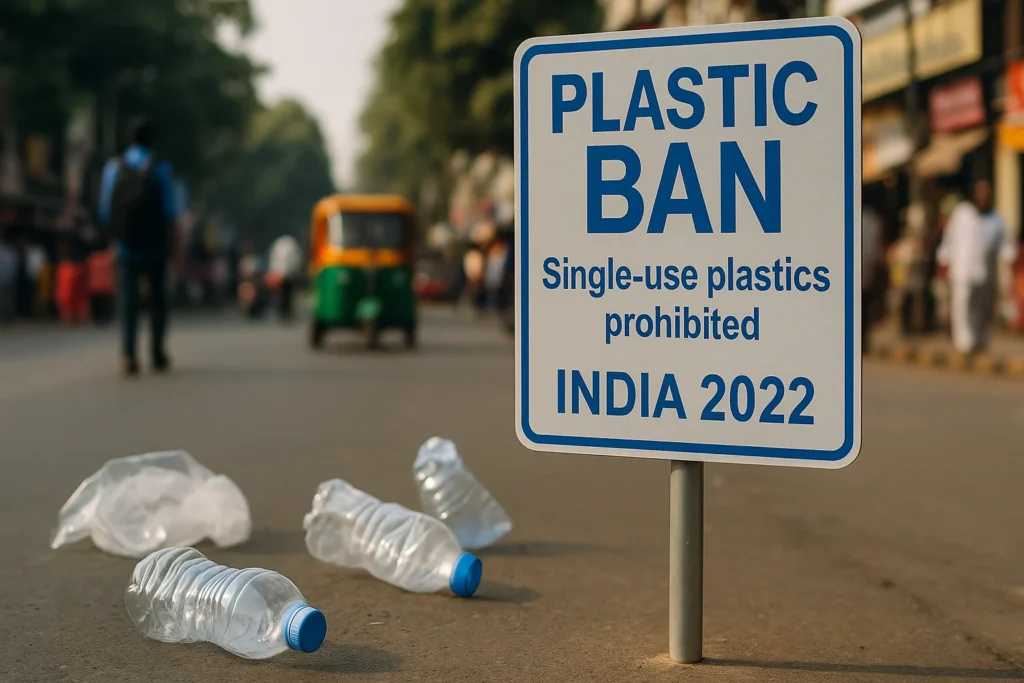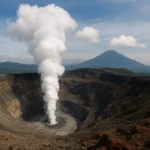The Plastic Pandemic: Understanding India’s Environmental Crisis
Beneath the vibrant chaos of India’s cities lies an invisible threat slowly choking the nation’s ecosystems. Plastic pollution has become India’s silent environmental emergency, with consequences more far-reaching than most citizens realize. The statistics paint a grim picture:
- 26,000 tonnes of plastic waste generated daily – equivalent to the weight of 5,200 elephants
- Only 60% of this waste gets recycled, leaving 10,400 tonnes to pollute the environment every single day
- 90% of bottled water samples contain microplastics
- 40% of cattle in urban areas have plastic in their digestive systems
The Yamuna River in Delhi presents a particularly disturbing case study. During dry seasons, the river’s surface becomes more plastic than water, with an estimated 58% of its mass composed of accumulated waste. This pollution doesn’t just affect the river – it impacts the entire food chain, from microorganisms to humans consuming fish from these waters.
Historical Context: India’s Long Road to Plastic Regulation
India’s relationship with plastic has evolved dramatically since its introduction in the 1960s. What began as a miraculous material revolutionizing packaging and product design gradually morphed into an environmental nightmare. The regulatory timeline reveals a growing awareness of the problem:
1980s-1990s: The Plastic Boom
- Unregulated expansion of plastic manufacturing
- Disposable culture takes root in urban centers
- First reports of agricultural impacts emerge
Early 2000s: First Regulatory Steps
- 2003: Plastic Waste Management Rules introduced
- 2009: Delhi implements plastic bag ban
- Growing scientific evidence of marine impacts
2010s: Regional Bans and Experiments
- 2016: National Plastic Waste Management Rules revised
- 2018: Maharashtra implements comprehensive ban
- Various states test different regulatory approaches
2020s: National Consensus
- 2021: Extended Producer Responsibility framework strengthened
- 2022: UN Plastic Treaty negotiations begin
- 2023: Nationwide single-use plastic ban implemented
The 2023 Ban: Anatomy of a Policy Revolution
The current ban represents the most comprehensive effort to date, targeting specific categories of single-use plastics identified through extensive research:
Banned Items Breakdown
Food Service Sector:
- Plastic cutlery (forks, spoons, knives)
- Plastic plates and trays
- Plastic stirrers and straws
- Plastic toothpicks
Packaging Materials:
- Plastic wrapping films under 50 microns
- Plastic invitation cards
- Plastic stickers and labels
- PVC banners under 100 microns
Consumer Goods:
- Plastic balloon sticks
- Plastic flags and flagsticks
- Thermocol decorations
- Plastic earbuds
Scientific Basis for Selection
Each banned item was chosen based on:
- Environmental Persistence: Items that take 500+ years to degrade
- Recyclability: Materials that cannot be economically recycled
- Alternative Availability: Products with viable substitutes already in market
- Usage Patterns: High-volume, low-utility items
Implementation Strategy: A Multi-Layered Approach
Recognizing the complexity of enforcing such a ban in a nation of 1.4 billion people, the government developed a sophisticated implementation framework:
1. Production and Supply Chain Controls
- Mandatory registration for all plastic manufacturers
- RFID tracking of raw material shipments
- Surprise audits of production facilities
- Strict import controls on plastic goods
2. Retail and Distribution Monitoring
- Digital licensing for retailers
- Mystery shopper programs
- Supply chain mapping for major brands
- Financial incentives for compliance
3. Consumer Engagement
- Nationwide awareness campaigns
- School education programs
- Community leader training
- Digital reporting tools
4. Enforcement Mechanisms
- Mobile enforcement squads
- AI-powered surveillance at markets
- Blockchain-based violation tracking
- Whistleblower protection programs
Economic Impacts: Winners and Losers in the Plastic Transition
The ban has created significant economic ripples across multiple sectors:
Plastic Industry Transformation
- 15% of plastic manufacturers have shut down
- 35% have converted to alternative materials
- 50% are in transition with government support
Job Market Shifts
- Estimated 250,000 jobs affected in traditional plastic sector
- 400,000 new jobs created in alternative materials sector
- 1.2 million waste pickers undergoing skills training
Emerging Market Opportunities
- Bioplastics market growing at 22% CAGR
- Plant-based packaging becoming export commodity
- Waste-to-energy projects attracting major investment
Innovation Spotlight: Indian Solutions to a Global Problem
India’s entrepreneurial spirit has risen to the challenge, producing remarkable innovations:
Material Science Breakthroughs
- Seaweed-based packaging from Tamil Nadu startups
- Nanocellulose films developed by IIT researchers
- Mushroom root composites for protective packaging
Low-Tech, High-Impact Solutions
- Areca palm leaf tableware cottage industries
- Water hyacinth fiber baskets from Kerala
- Banana stem packaging from rural Maharashtra
Digital Solutions
- Plastic credit trading platforms
- AI-powered waste sorting systems
- Blockchain material traceability networks
Global Comparisons: How India’s Approach Differs
While many nations have implemented plastic regulations, India’s approach stands out in several key aspects:
Scale of Implementation
- Covers 28 states and 8 union territories
- Affects over 6 million retail outlets
- Involves 1,500+ urban local bodies
Cultural Adaptation
- Incorporates traditional materials (leaf plates, clay cups)
- Leverages community networks (resident associations, trade groups)
- Respects religious practices (temple offerings, festival decorations)
Economic Transition Support
- ₹5,000 crore fund for manufacturer conversion
- Skill development programs for workers
- Tax incentives for alternative material businesses
Case Study: Mumbai’s Remarkable Transformation
India’s financial capital provides an inspiring example of what’s possible:
Before the Ban (2022)
- 700 tonnes of plastic waste daily
- 80% of beach litter was plastic
- Chronic drainage clogging during monsoons
Implementation Strategies
- Dabbawala network repurposed for cloth bag distribution
- Fishing communities trained in ocean cleanup
- Slum communities engaged in recycling programs
After One Year (2024)
- 65% reduction in plastic waste
- 40% cleaner beaches
- 50% fewer flood incidents
The Human Element: Stories from the Plastic Frontlines
Behind the statistics are countless human stories of adaptation:
Ramesh Patel, Plastic Manufacturer (Ahmedabad)
“We ran a polystyrene factory for 25 years. The ban forced us to change or die. With government loans, we converted to making biodegradable packaging. Now we’re exporting to Europe.”
Sunita Devi, Street Vendor (Delhi)
“At first I worried about costs. But customers actually prefer the leaf plates – they say food tastes better. And I save money not buying plastic bags.”
Dr. Anika Joshi, Marine Biologist (Goa)
“In our turtle nesting surveys, we’re seeing fewer plastic-related deaths. The beaches still aren’t perfect, but there’s real progress.”
Ongoing Challenges: The Road Ahead
Despite successes, significant hurdles remain:
Technical Challenges
- Multi-layered packaging recycling
- Microplastic filtration systems
- Affordable alternative materials
Behavioral Challenges
- Consumer convenience expectations
- Price sensitivity to alternatives
- Habit persistence in older generations
Systemic Challenges
- Cross-state enforcement coordination
- Informal sector integration
- Global plastic trade pressures
Citizen’s Guide to Plastic-Free Living
Every individual can contribute through practical actions:
At Home
- Install water filters to avoid bottled water
- Make DIY cleaning products in reusable containers
- Choose natural fiber clothing over synthetics
While Shopping
- Carry reusable produce bags
- Buy in bulk to reduce packaging
- Choose products with minimal packaging
In the Community
- Participate in local cleanups
- Educate domestic workers about waste sorting
- Support plastic-free businesses
The Global Impact: Why India’s Success Matters
As the world’s most populous democracy and fifth-largest economy, India’s plastic policies have global ramifications:
Environmental Impact
- Potential to reduce ocean plastic by 15%
- Could prevent 50 million tonnes of CO2 emissions by 2030
- May protect 200+ endangered species
Economic Influence
- Creates blueprint for developing nations
- Stimulates global alternative materials market
- Reduces plastic waste export pressures
Diplomatic Leadership
- Strengthens India’s environmental credentials
- Provides leverage in climate negotiations
- Positions India as sustainability innovator
Future Projections: Where Do We Go From Here?
Based on current trajectories, experts predict:
Short-Term (2024-2026)
- 70% compliance in urban areas
- Alternative materials price parity
- Major innovations in recycling tech
Medium-Term (2027-2030)
- Circular economy frameworks established
- Plastic waste reduced by 50%
- New green jobs surpass lost plastic jobs
Long-Term (2031-2040)
- Near-total elimination of single-use plastics
- India as global leader in sustainable packaging
- Plastic pollution no longer top environmental threat
Conclusion: A Plastic-Free India – Dream or Inevitable Future?
As India marches forward in its war against plastic, the nation stands at a critical crossroads. The early successes demonstrate what’s possible with determined policy, innovative thinking, and public participation. However, the true test will come in maintaining momentum as initial enthusiasm wanes and hard economic realities persist.
What makes India’s experiment unique isn’t just its scale, but its potential to prove that rapid environmental progress is possible even in developing economies. If successful, India’s plastic revolution could become a model for nations worldwide struggling to balance economic growth with environmental responsibility.
The plastic crisis took decades to create, and solving it will require sustained effort. But with each cloth bag used, each steel straw carried, and each plastic item refused, India moves one step closer to reclaiming its environment from the grip of plastic pollution. The journey has begun, and the world watches with hope.



